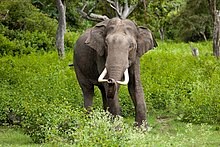Published on: January 6, 2023
Nilgiri Reserve
Nilgiri Reserve
Why in news? Asian elephant has lost most of its optimal habitat in Nilgiri Reserve
Highlights

- Northern part of the Western Ghats includes the Nilgiri Biosphere Reserve [NBR] and its surrounding protected areas, contain the largest remaining population of wild elephants
- Palghat Gap is a break in the western Ghats that is “relatively flat and consequently easily negotiable by elephants”.
What are the main hindrance in their movement ?
- Human settlements and crop cultivation have hindered the movement of the elephants, keeping them confined to the hilly areas, considered sub-optimal habitats in the Palghat Gap
- In sub-optimal habitats, elephants chances of survival are lower due to dangerous terrain for animals of this size.
What are the main Consequences ?
- Barriers that are erected, particularly in areas with slopes, their movement is blocked and gene flow reduced ultimately lead to increasing the extinction risk of this endangered species
- If movement is restricted and gene flow reduced, there is more in-breeding, and low genetic diversity, pushing up chances of disease, and lowering fertility rates.
- Enclosing protected areas without ensuring connectivity through maintaining corridors for elephants to pass through severs gene flow between populations.
- If elephants cannot move from one valley to the next on relatively flat terrain, then population connectivity gets severed
Mountainous habitats
- Elephants roamed freely across South-East Asia, all the way to China, but “anthropogenic pressures” have restricted them to mountain chains.
Palakkad Gap
- Location : Between the Nilgiri Hills to the north and Anaimalai Hills to the south
- Low mountain pass in the Western Ghats between Coimbatore in Tamil Nadu and Palakkad in Kerala
- River : Bharathappuzha river
- It is one of the major wind power generation areas
- History : Helped the Cheras rule the entire Kerala and the Kongu Nadu as one geographical unit from Karur in Western Tamil Nadu.
Asian elephant
- They are the largest living land animal in Asia.
- Distribution : Throughout the Indian subcontinent and Southeast Asia, , Nepal , Sumatra, and to Borneo
- It is one of only three living species of elephants anywhere in the world, the others being the African bush elephant and African forest elephant.
- Threats : Loss of habitat, habitat degradation, fragmentation and poaching
- History: Earliest indications are engravings on seals of the Indus Valley civilisation
- IUCN status: Endangered
- Habitation : Grasslands, tropical evergreen forests, semi-evergreen forests, moist deciduous forests, dry deciduous forests and dry thorn forests, in addition to cultivated and secondary forests and scrublands.
- Conservation : Listed on CITES Appendix I, quintessential flagship species and World Elephant Day (12 August)

